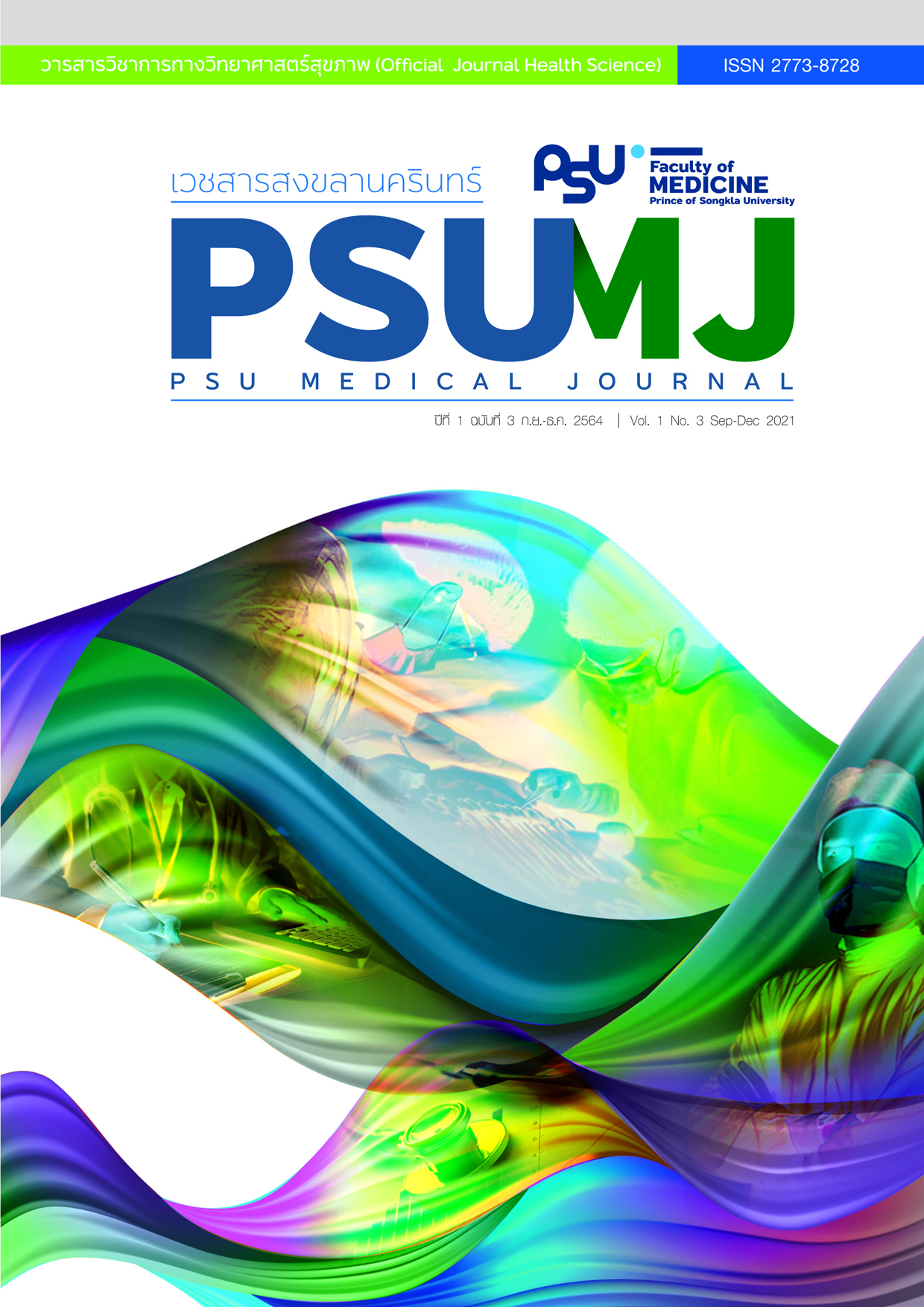Renal Function after Nephrectomy: To Examine any Differences Between Kidney Cancer and Kidney Donation
Renal Functions after a Unilateral Nephrectomy
DOI:
https://doi.org/10.31584/psumj.2022248435Keywords:
donor nephrectomy, radical nephrectomy, renal cell carcinoma, renal functionAbstract
Objective: To evaluate renal function after radical nephrectomy (RN) and donor nephrectomy (DN), and the differences in changes and identify factors that lead to chronic renal failure.
Material and Methods: A retrospective review of patients diagnosed with renal cell carcinoma, who received RN and
donors of living kidney transplantation. Kidney function in both groups was measured before and after surgery. We assessed the donors’ kidney functions using an estimated Glomerular filtration rate (eGFR), through a Modification of Diet in Renal Disease (MDRD) formula [GFR = 186 x serum creatine-1.154 age-0.203 x 0.742 (if the patient was female). Kidney function after surgery was evaluated at 1, 3, 6 and 12 months. Rates of renal function decline were analyzed compared with baseline.
Results: A total of 249 patients were included in the study, 50 in the DN group and 199 in the RN group. The mean eGFRs before surgery were 68.6 ml/min/1.73m2 and 88.8 ml/min/1.73m2 in the RN and DN groups, respectively. During
the first year postoperatively, renal function in the RN and DN groups decreased by approximately 25.6% and 27.2%
from baseline, respectively.
Conclusion: Renal function after surgery declined after both RN and DN, but the pattern of changes in renal function was different between the groups, possibly due to the patients in the DN group being younger and healthier. There were no differences in percentage of change in eGFR between the groups at the 1 year follow up.
References
Achermann C, Stenner F, Rothschild SI. Treatment, outcome and prognostic factors in renal cell carcinoma – A single center study (2000-2010). J Cancer 2016;7:921-7.
Lojanapiwat B. Urologic cancer in Thailand. Jpn J Clin Oncol 2015;45:1007-15.
Timsit MO, Nguyen KN, Rouach Y, Elie C, Loupy A, Fournier C, et al. Kidney function following nephrectomy: Similitude and discrepancies between kidney cancer and living donation. Urol Oncol 2012;30:482-6.
Escudier B, Porta C, Schmidinger M, Rioux-Leclercq N, Bex A, Khoo V, et al. Renal cell carcinoma: ESMO clinical practice guidelines for diagnosis, treatment and follow-up. Ann Onco 2019;30:706-20.
Vergho D, Burger M, Schrammel M, Brookman‐May S, Gierth M, Hoschke B, et al. Matched‐pair analysis of renal function in the immediate postoperative period: a comparison of living kidney donors versus patients nephrectomized for renal cell cancer. World J Urol 2015;33:725–31.
Shapiro R. End-stage renal disease in 2010: innovative approaches to improve outcomes in transplantation. Nat Rev Nephrol 2011;7:68–70.
Mjøen G, Øyen O, Midtvedt K, Dahle DO, Norby G, Holdaas H. Age, gender, and body mass index are associated with renal function after kidney donation. Clin Transplant 2011;25:E579–83.
Lee SH, Kim DS, Cho S, Kim SJ, Kang SH, Park J, et al. Comparison of postoperative estimated glomerular filtration rate between kidney donors and radical nephrectomy patients, and risk factors for postoperative chronic kidney disease. Int J Urol 2015;22:674-8.
Kong HJ, Park JS, Kim DY, Shin HS Jung HJ. Renal function following curative surgery for renal cell carcinoma: who is at risk for renal insufficiency? Korean J Urol 2013;54:830–3.
Huang WC, Levey AS, Serio AM, Snyder M, Vickers AJ, Raj GV, et al. Chronic kidney disease after nephrectomy in patients with renal cortical tumours: a retrospective cohort study. Lancet Oncol 2006;7:735–40.
Fehrman-Ekholm I, Norden G, Lennerling A, Holmdahl J, Kvarnstrom N, Olausson M. Incidence of end-stage renal disease among live kidney donors. Transplantation 2006; 82:1646–8.
Downloads
Published
How to Cite
Issue
Section
License
Copyright (c) 2021 Author and Journal

This work is licensed under a Creative Commons Attribution-NonCommercial-NoDerivatives 4.0 International License.








